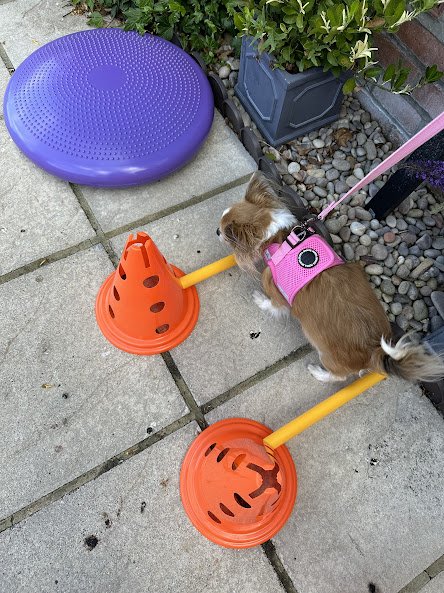Benefits of veterinary physiotherapy and rehabilitation following orthopaedic surgery
In this blog, we’ll explore some of the many benefits of post orthoaepdic surgery physiotherapy. Chartered physiotherapists specialising in animal therapy (ACPAT) are Veterinary physiotherapists who are human trained and have then undergone specific training completing a post graduate diploma or masters degree in veterinary physiotherapy. As with treating any patient once a vet consent and referral form has been received physiotherapy will commence with an initial assessment to enable a plan for treatment to be individualised for the animal.
In recent years, the adoption of veterinary physiotherapy post-orthopaedic surgeries has become more widely used. Veterinary surgeons now recognise that while surgery is crucial, it alone may not suffice for a complete return to normal functionality. Post op crate rest, advice re no jumping, furniture and daily lead walks (gradual increase in time over 8 weeks) are sometimes all that is recommended following surgery. However this doesn’t take into account any previous loss of muscle strength or other issues prior to surgery. This is particularly in the case of chronic cruciate disease where the dog may have been lame for several weeks / months prior to surgery as opposed to an acute cruciate rupture following a particular incident for example chasing a ball. In an elderly dog recovery is often longer and may be further complicated by underlying arthritis. This can hinder recovery, and this is where physiotherapy can provide significant benefits in the rehabilitation process following surgery.
Research indicates that early post-operative physiotherapy can significantly benefit dogs after stifle surgery.
Veterinary physiotherapy can help dogs recover from orthopaedic surgery in many ways, including:
Improved range of motion
In the very early post operative period Passive range of motion exercises help dogs move their joints without putting weight on them, which increases circulation and helps maintain healthy joints.
Reduced pain and inflammation
Physiotherapy can help reduce pain and inflammation through non-invasive therapies like massage and laser treatment.
Improved muscle strength
Physiotherapy can help dogs regain full use of their muscles through targeted exercises and therapies.
Enhanced healing
Physiotherapy techniques like ultrasound and laser therapy (class 3b / IV) can promote tissue healing and reduce inflammation.
Reduced risk of complications
Physiotherapy can help prevent complications like muscle atrophy, scar tissue buildup, and compensatory injuries.
Improved balance and proprioception
Early veterinary physiotherapy can help dogs recover their balance and proprioception.
Early weight bearing
Early physiotherapy can encourage dogs to bear weight on their operated limb.
By integrating effective physiotherapy into recovery plans, we can empower our furry companions to heal more effectively and return to their joyful selves faster!
Furthermore, it is suggested that rehabilitation in dogs should commence the first day after stifle (cruciate) surgery to achieve better outcomes and recovery rates (Monk et al, 2006; Davidson et al, 2005; Marsolais et al, 2006)

